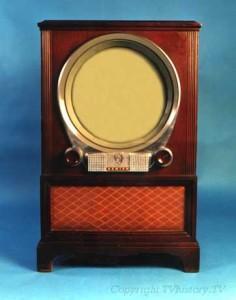 Most people are skeptical when I say this, but I can remember seeing a TV from my crib. I have no idea what might have been on, but I definitely have an image of hanging on to the top of the crib rail watching someone talking. The set was a Zenith similar to the one at right.
Most people are skeptical when I say this, but I can remember seeing a TV from my crib. I have no idea what might have been on, but I definitely have an image of hanging on to the top of the crib rail watching someone talking. The set was a Zenith similar to the one at right.
TV was an obsession, not only of mine, but of the nation as I was growing up. There were only three networks (actually four, but I have no memory of the DuMont network, which folded in 1955). Because of this, we as a nation had a number of collective experiences and, in many ways, a shared culture. It was easy to have conversations about what people had seen on the evening news, I Love Lucy or Gunsmoke.
Now, we all feed our own interests with Internet sites, specialized magazines and cable TV channels tailored to foodies, sports nuts, country music fanatics, and news slanted any way you want it, from conservative, to middle of the road, to liberal.
Programming and content are now available from so many sources, reports USA Today, that an estimated 5 million households have unplugged altogether from broadcast and cable TV. You might still find a TV set in their homes, but it’s being fed by Netflix, Amazon and services like Hulu Plus, Roku and Apple TV. Often this means that these viewers are seeing last season’s episodes of a TV show, but they don’t care. There’s so much to watch these days that you can’t possibly keep current on everything available, so what’s the harm in being a little behind the curve on a particular program?
Long term, this raises questions about how programming will be paid for. HBO gets money to produce programs from subscribers, but will its subscribers be available if the paid-cable model disintegrates? Netflix recently produced its first series, House of Cards, with money from its subscribers. (I’ve watched the first season’s 13 episodes, and it’s high-quality drama.)
Whatever happens, my guess is that the 5 million households will grow quickly over the next few years. USA Today reported that last year, the cable, satellite and telecoms providers added just 46,000 video customers collectively. That’s less than 5 percent of the 974,000 new households created last year. While cable, satellite and telecom providers still claim 100.4 million homes, or 84.7% of all households, that’s down from the peak of 87.3% in early 2010.
Personally, I’m not ready to leave cable just yet, even though my “bundled” bill – cable, Internet and phone – feels like a big bite each month. I don’t want to lose the news networks, PBS and some real-time sports events that I think would be hard to replace.
What about you? Are you thinking of turning your back on traditional TV providers in favor of something new? Why or why not? Let me know.

